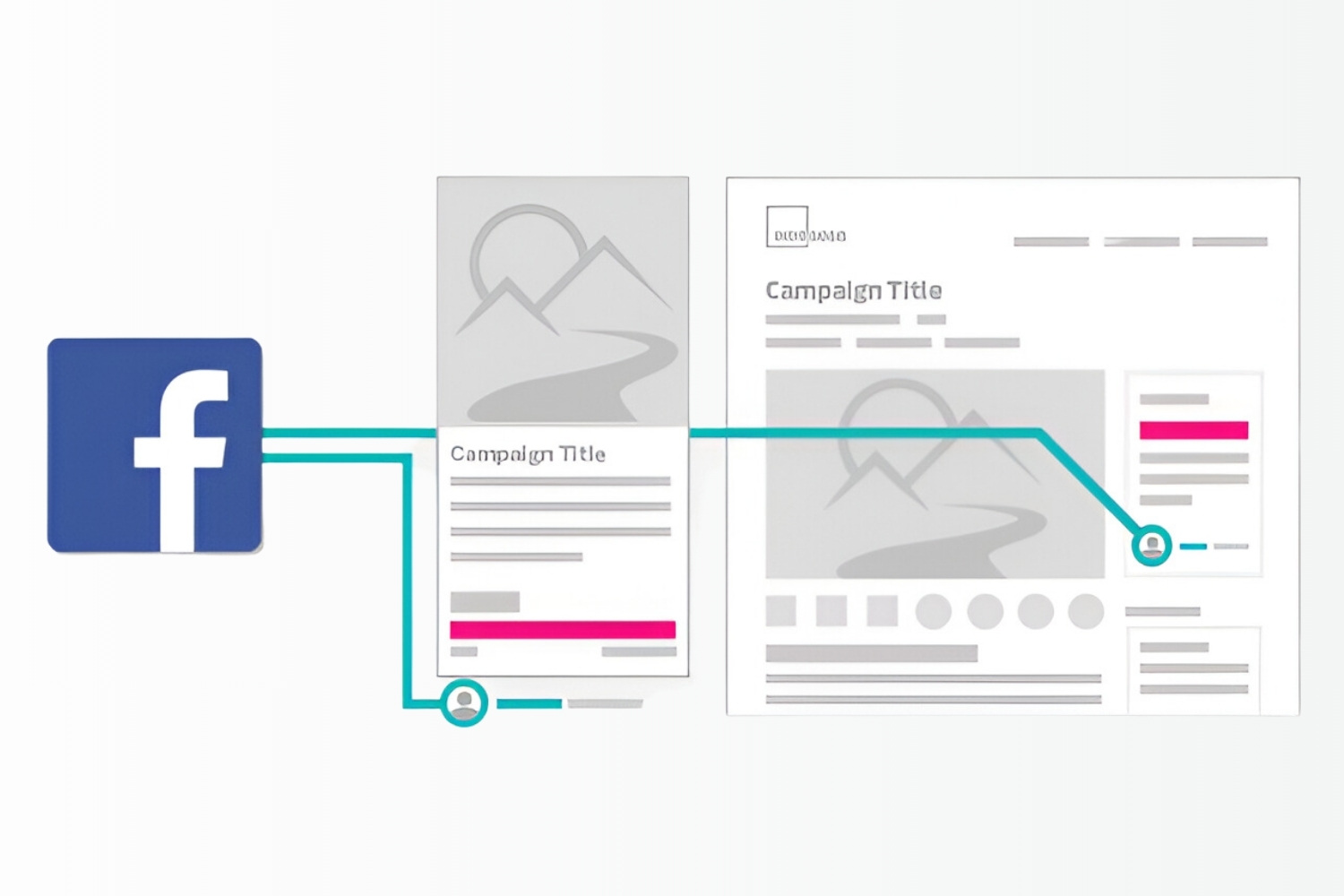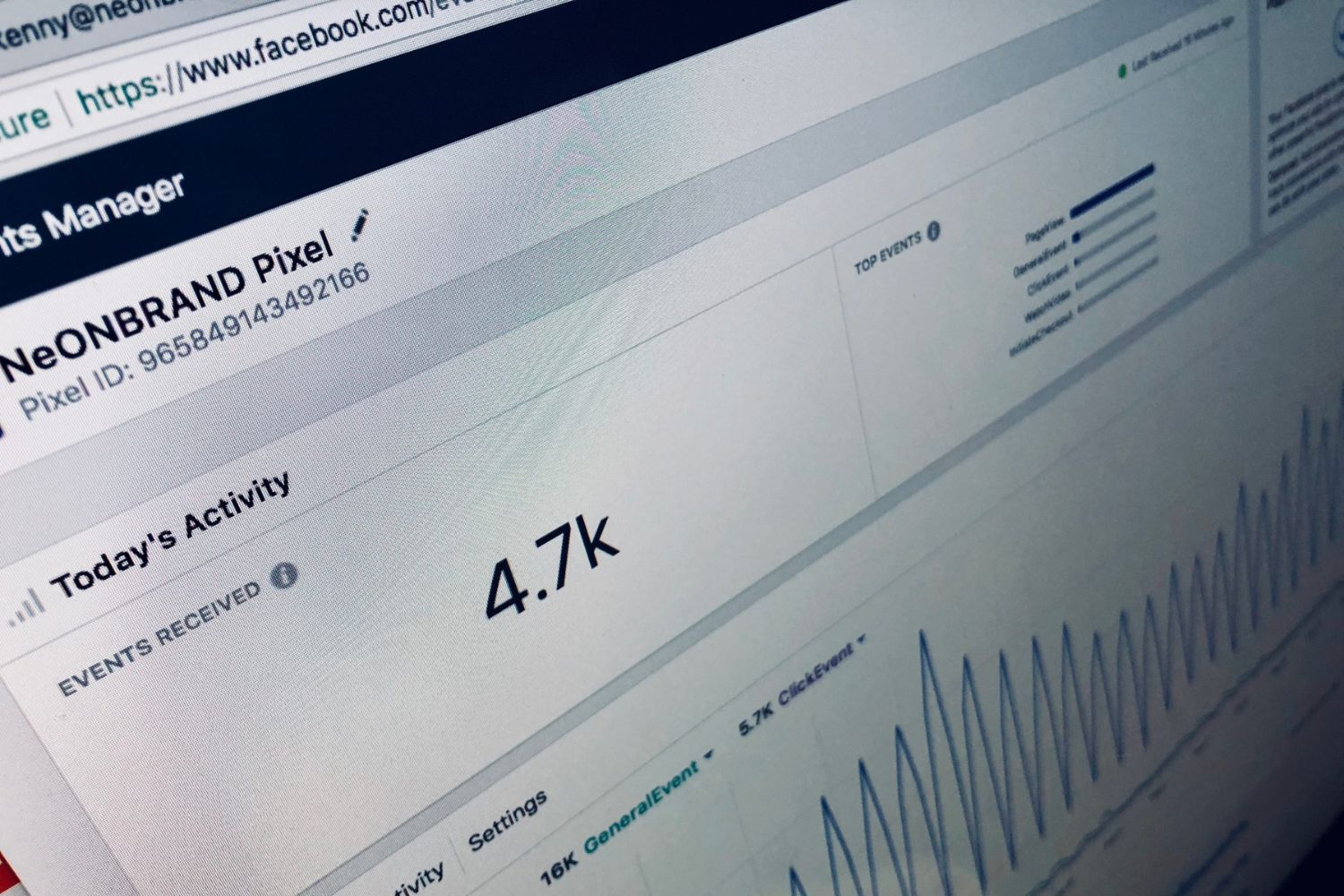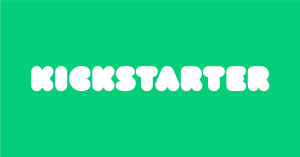Introduction
Welcome to the world of crowdfunding on Facebook! If you’re looking to raise funds for your project, cause, or business, Facebook offers a powerful platform to connect with potential supporters and turn your dreams into reality. With over 2.8 billion active monthly users, Facebook provides an immense opportunity to reach a wide audience and tap into their generosity.
Crowdfunding has become a popular way to fund projects in recent years, and Facebook has emerged as a key player in this space. It offers a unique advantage over dedicated crowdfunding platforms by providing access to a vast network of friends, family, and acquaintances who are already connected to you. This built-in support system can significantly enhance your fundraising efforts.
In this guide, we will take you through the process of setting up a successful crowdfunding campaign on Facebook. We’ll cover strategies, tips, and best practices to help you maximize your reach, engage your audience, and ultimately surpass your fundraising goals.
Whether you’re an entrepreneur looking to launch a new product, a non-profit organization seeking donations for a meaningful cause, or an individual seeking funding for a personal project, crowdfunding on Facebook can be a game-changer. It allows you to harness the power of social connections, build a community of supporters, and tap into the generosity of your network.
Throughout this guide, we will provide you with step-by-step instructions, practical tips, and insights to help you navigate the world of crowdfunding on Facebook. We’ll cover everything from setting up your crowdfunding page to creating compelling pitches, engaging your audience, utilizing Facebook ads, and analyzing your campaign’s performance.
So, let’s dive in and explore the incredible possibilities that crowdfunding on Facebook holds. Get ready to share your story, inspire others, and raise the funds you need to bring your vision to life.
Why choose Facebook for crowdfunding?
When it comes to crowdfunding, there are numerous platforms available, each with its own unique benefits. However, Facebook stands out as a fantastic choice for your crowdfunding campaign. Here are several reasons why:
- Access to a massive user base: With billions of active monthly users, Facebook provides an unparalleled reach for your crowdfunding campaign. This vast audience presents a tremendous opportunity to connect with potential supporters who may be interested in your project or cause.
- Targeted audience: Facebook allows you to target specific demographics, interests, and behaviors when promoting your crowdfunding campaign. This targeting feature ensures that your message reaches the right people who are most likely to support your cause or invest in your project.
- Social connections and trust: Crowdfunding on Facebook leverages the power of social connections. By tapping into your existing network of friends, family, colleagues, and acquaintances, you can benefit from the trust and familiarity that people have with those in their social circle. This can significantly boost the credibility and success of your campaign.
- Engagement and interaction: Facebook provides an interactive platform where you can engage directly with your audience. You can share updates, respond to comments and questions, and create a sense of community around your campaign. This level of engagement helps build trust, foster relationships, and encourage ongoing support throughout your crowdfunding journey.
- Cost-effective promotion: Compared to traditional forms of advertising, promoting your crowdfunding campaign on Facebook can be highly cost-effective. You can set a budget that suits your needs and reach a large audience through targeted ads and sponsored posts. This allows you to maximize your campaign’s visibility while being mindful of your budget.
- Integration with other platforms: Facebook offers seamless integration with other popular platforms, such as Instagram, which is also owned by Facebook. This integration allows you to extend your crowdfunding campaign’s reach and leverage cross-promotion opportunities across multiple platforms.
These are just a few of the many reasons why Facebook is an excellent choice for your crowdfunding campaign. By leveraging its extensive user base, targeted advertising options, social connections, and interactive features, you can enhance your chances of fundraising success.
Setting up your crowdfunding page on Facebook
Setting up a compelling crowdfunding page on Facebook is a crucial first step in your fundraising journey. It serves as the foundation for your campaign and allows you to effectively communicate your project to potential supporters. Follow these steps to create an engaging and informative crowdfunding page:
- Create a Facebook Page: If you don’t already have one, create a dedicated Facebook Page for your crowdfunding campaign. This will separate your campaign from your personal profile and enable you to access a wide array of features specifically designed for businesses, organizations, and projects.
- Add a compelling cover photo and profile picture: Choose eye-catching visuals that represent your project or cause. Your cover photo should grab attention and convey the essence of your campaign, while your profile picture can be your logo or a clear and recognizable image.
- Write a compelling description: Craft a well-written and concise description of your crowdfunding campaign. Clearly communicate the purpose, goals, and impact of your project. Use persuasive language to grab readers’ attention and make them eager to learn more.
- Include project details: Provide specific details about your project, such as what it entails, how funds will be used, and any relevant timelines or milestones. Be transparent and comprehensive to instill trust and confidence in potential supporters.
- Add multimedia content: Enhance your crowdfunding page with engaging multimedia content. Include high-quality photos and videos that showcase your project in action or explain its significance. Visual content can be highly impactful in capturing the attention and interest of visitors.
- Set a realistic funding goal: Determine how much money you need to achieve your project’s objectives and set a realistic funding goal. Ensure that it aligns with your project’s scope and the level of support you believe you can generate.
- Select a campaign duration: Choose a suitable duration for your crowdfunding campaign. Consider factors such as the urgency of your project, the time needed to promote it effectively, and any external deadlines or events that may impact your campaign.
- Add call-to-action buttons: Utilize the call-to-action buttons on your Facebook Page to encourage visitors to take specific actions, such as donating, signing up for updates, or sharing your campaign with their friends. Make these buttons prominently visible and enticing.
- Personalize your page: Add a personal touch to your crowdfunding page by sharing your story and journey. Create an emotional connection with visitors by explaining why this project is meaningful to you and how their support would make a difference.
- Regularly update your page: Keep your crowdfunding page up to date with regular updates on your progress, milestones reached, and any new developments. Engage actively with your supporters, respond to comments and messages, and foster a sense of community around your campaign.
By following these steps and investing time in creating a compelling crowdfunding page, you’ll lay the groundwork for a successful campaign on Facebook. Remember to continuously tweak and optimize your page as needed to maximize its impact and resonate with your target audience.
Creating the perfect pitch for your campaign
A well-crafted pitch is essential for capturing the attention of potential supporters and inspiring them to contribute to your crowdfunding campaign on Facebook. Your pitch should effectively communicate the value and impact of your project, compelling people to take action. Here are some tips to create the perfect pitch:
- Start with a captivating hook: Begin your pitch with a strong and attention-grabbing opening line. You want to immediately draw people in and make them curious about your project. Consider using a compelling statistic, an intriguing statement, or a thought-provoking question to pique their interest.
- Tell your story: Share the story behind your project and why it matters to you. Connect with your audience on an emotional level by explaining the personal or societal impact that your project aims to achieve. Use storytelling techniques to engage readers and make a lasting impression.
- Highlight the problem and solution: Clearly articulate the problem or challenge your project addresses and explain how your solution is unique and impactful. Help your audience understand why your project is necessary and how it can bring about positive change.
- Showcase benefits and rewards: Demonstrate the benefits that supporters will receive by contributing to your campaign. Let them know how their support will make a difference and what they will gain in return. This could include exclusive perks, early access to your product, or the satisfaction of making a meaningful contribution.
- Use compelling visuals: Enhance your pitch with visually appealing elements such as images, videos, or infographics. Visual content can help convey your message more effectively and leave a lasting impression. Use items that showcase the impact of your project or offer a glimpse into the journey.
- Be transparent and realistic: Build trust with potential supporters by being transparent about your project’s goals, timeline, and budget. Show that you’ve done your research, have a solid plan, and are committed to delivering on your promises. Avoid making unrealistic claims or exaggerating the potential outcomes of your project.
- Include social proof: Incorporate testimonials, endorsements, or success stories from individuals who have benefited from or supported your project. Social proof adds credibility and reassures potential supporters that others have found value in what you’re offering.
- Create a sense of urgency: Convey a sense of urgency and exclusivity to encourage immediate action. Highlight limitations or time-sensitive opportunities that make it compelling for people to contribute to your campaign sooner rather than later.
- Keep it concise and compelling: Make sure your pitch is concise and to the point. Focus on the essential elements and avoid overwhelming readers with too much information. Present your pitch in a clear and compelling manner that is easy to understand and digest.
- End with a call to action: Clearly state the action you want potential supporters to take. Whether it’s donating, sharing your campaign, or signing up for updates, provide a clear call to action that motivates people to take the next step.
Remember to continuously refine and iterate your pitch based on feedback and insights from your audience. A well-crafted pitch can significantly enhance the success of your crowdfunding campaign on Facebook by compelling people to support your cause and become advocates for your project.
Engaging your Facebook community
Engaging your Facebook community is crucial for the success of your crowdfunding campaign. It involves fostering connections, building relationships, and creating a sense of belonging among your supporters. Here are some effective strategies to engage your Facebook community and encourage active participation:
- Regularly post updates: Keep your audience informed about the progress of your campaign. Share updates on milestones reached, new developments, and any exciting news related to your project. Consistent communication will keep your community engaged and demonstrate your commitment.
- Respond to comments and messages: Actively monitor and respond to comments, messages, and inquiries from your Facebook community. Promptly address any concerns, answer questions, and show appreciation for the support you receive. Engaging in conversations demonstrates your dedication and cultivates a sense of trust and connection.
- Encourage user-generated content: Motivate your community to create and share their own content related to your project. This could include testimonials, success stories, or photos and videos of how they are using or benefiting from your product or service. User-generated content not only increases engagement but also serves as social proof and word-of-mouth promotion.
- Create interactive posts: Spark conversation and engagement by posing questions, running polls or surveys, or hosting contests and giveaways. Encourage your audience to share their thoughts, opinions, and experiences related to your project. These interactive posts can generate excitement, drive participation, and strengthen community bonds.
- Show appreciation and acknowledge supporters: Express gratitude for the support you receive from your Facebook community. Publicly acknowledge and thank your supporters for their contributions, whether big or small. Share success stories of how their support has made a difference, showcasing the impact of their involvement.
- Offer exclusive incentives: Reward your Facebook community with exclusive incentives and special offers. Provide early access to new features or updates, offer limited-time discounts or promotions, or create VIP perks for your most engaged supporters. This provides an extra layer of value to your community and fosters a sense of loyalty.
- Host live events and Q&A sessions: Utilize Facebook Live to host live events, Q&A sessions, or webinars where your community can interact with you in real-time. This creates a more personal connection and allows for direct engagement with your audience. Encourage attendees to ask questions, share their thoughts, and actively participate in the discussion.
- Promote user testimonials: Share testimonials or success stories from satisfied customers or previous supporters. Highlight how your project has made a positive impact on their lives or contributed to their success. This not only showcases the value of your project but also encourages others to get involved.
- Collaborate with influencers or partners: Identify influencers or partners in your industry who align with your mission and target audience. Collaborate with them to create joint content, host cross-promotions, or leverage their reach to expand your community. This can bring in new supporters and further engage your existing audience.
- Listen and learn from your community: Pay attention to the feedback, suggestions, and ideas shared by your Facebook community. Actively listen to their needs and preferences to improve your project and enhance the overall experience. Show that you value their input and are committed to continually evolving based on their insights.
By implementing these strategies and nurturing your Facebook community, you can create an environment that fosters engagement, loyalty, and ongoing support. Remember that engagement is a two-way street, so prioritize building meaningful relationships and creating value for your community.
Utilizing Facebook ads for crowdfunding success
Facebook ads provide a powerful tool to reach a targeted audience and amplify the impact of your crowdfunding campaign. By utilizing Facebook ads effectively, you can increase visibility, attract new supporters, and boost contributions. Here are some strategies to make the most of Facebook ads for your crowdfunding success:
- Define your target audience: Clearly define the demographics, interests, and behaviors of your ideal supporters. Use Facebook’s targeting options to narrow down your audience and ensure your ads are seen by people most likely to be interested in your project.
- Create compelling ad visuals: Use eye-catching images or videos that resonate with your target audience. Ensure that your visuals align with your campaign message and effectively communicate the value and impact of your project. High-quality, engaging visuals can significantly increase click-through rates and conversions.
- Craft compelling ad copy: Write persuasive and concise ad copy that highlights the key benefits, unique selling points, and call to action. Use language that triggers emotions and compels viewers to take action. Experiment with different phrases, headlines, and ad formats to find what resonates best with your audience.
- Experiment with different ad formats: Explore various ad formats offered by Facebook, such as carousel ads, video ads, or canvas ads. Test different formats to find which ones generate the most engagement and conversions for your campaign.
- Set a realistic budget: Determine your advertising budget based on your campaign goals and overall budget. Start with a modest budget and analyze the performance of your ads. Gradually scale up your ad spend as you identify successful ad campaigns and optimize your targeting and messaging.
- Monitor and optimize your ads: Continuously monitor the performance of your ads and make data-driven optimizations. Test different ad variations, adjust targeting parameters, and refine your messaging based on the insights you gather. Regularly review key metrics such as click-through rates, conversion rates, and cost per acquisition to identify areas for improvement.
- Utilize retargeting: Implement Facebook’s retargeting feature to reach people who have already shown interest in your campaign or visited your crowdfunding page. Create custom audiences based on specific actions, such as website visitors or previous campaign contributors, and serve them tailored ads to increase conversion rates.
- Track conversions and performance: Set up conversion tracking to measure the effectiveness of your ads in driving desired actions, such as contributions or sign-ups. Monitor the performance of your ads closely, analyze the data, and make informed decisions based on the insights gained.
- Test and optimize continuously: A/B test different ad elements, such as visuals, headlines, and ad copy, to find the winning combinations that yield the best results. Continuously optimize your ads based on performance data to increase reach, engagement, and conversions.
- Seek professional assistance if needed: If you’re new to Facebook advertising or want to maximize your results, consider working with a professional digital marketing agency or expert who can help you strategize, implement, and optimize your ad campaigns for crowdfunding success.
By utilizing Facebook ads strategically, you can effectively target your ideal audience, grab their attention, and motivate them to contribute to your crowdfunding campaign. With careful planning, monitoring, and optimization, Facebook ads can make a significant impact on the success of your crowdfunding efforts.
Sharing your campaign outside of Facebook
While Facebook provides a fantastic platform for your crowdfunding campaign, it’s essential to extend your reach beyond the confines of the social media giant. By sharing your campaign outside of Facebook, you can reach a wider audience and tap into additional networks. Here are some effective strategies to promote your crowdfunding campaign beyond Facebook:
- Utilize email marketing: Leverage your email list to spread the word about your campaign. Craft a compelling email newsletter or campaign to inform your subscribers about your crowdfunding initiative. Personalize your message, clearly explain your project, and provide a direct call to action for them to contribute or share your campaign with others.
- Leverage personal connections: Reach out to your personal network, including friends, family, colleagues, and acquaintances. Send personalized messages or emails to individuals you believe would be interested in supporting your project. Personal connections can have a significant impact on generating initial support and word-of-mouth promotion.
- Engage in relevant online communities: Identify online communities, forums, or discussion boards relevant to your project or cause. Engage with the community members by providing valuable insights, participating in discussions, and subtly mentioning your crowdfunding campaign when appropriate. Be mindful of each community’s rules and guidelines to avoid coming across as spammy or self-promotional.
- Collaborate with influencers and bloggers: Identify influencers or bloggers within your niche who have a significant following and align with your campaign. Reach out to them to explore collaboration opportunities, such as guest posts, interviews, or reviews. Their endorsement and promotion can broaden your exposure and attract new supporters.
- Create engaging content: Produce informative and engaging content related to your project or cause. This could include blog posts, articles, videos, or podcasts that provide valuable insights, showcase your expertise, or tell compelling stories. Share this content on your website, social media platforms, and other relevant channels to drive traffic and generate interest in your crowdfunding campaign.
- Collaborate with complementary projects or campaigns: Identify projects or campaigns that complement yours in some way. Collaborate with these initiatives to cross-promote each other’s campaigns. You can highlight their project on your Facebook page and ask them to do the same for your campaign on their platforms. This mutual support can help broaden your reach and tap into new networks.
- Utilize crowdfunding platforms: In addition to Facebook, consider listing your campaign on dedicated crowdfunding platforms such as Kickstarter, Indiegogo, or GoFundMe. These platforms have a built-in audience of users actively seeking new projects to support. Promote your campaign on these platforms and leverage their resources to increase visibility and attract potential backers.
- Offline promotion: Don’t forget about the power of offline promotion. Print flyers or business cards with information about your campaign and distribute them at relevant events, conferences, or community gatherings. Tap into local media outlets, such as newspapers, radio stations, or TV channels, to share your story and increase awareness about your campaign.
- Engage in public relations: Reach out to local or industry-specific media outlets to share your crowdfunding story. Craft a compelling press release, highlighting the unique aspects of your project and the impact it will have. Develop relationships with reporters and journalists who may be interested in featuring your campaign in their publications or platforms.
- Utilize social media platforms beyond Facebook: Expand your presence on other social media platforms such as Instagram, Twitter, LinkedIn, or YouTube, depending on where your target audience is most active. Tailor your content and messaging to align with the nuances and best practices of each platform to maximize engagement and reach.
By diversifying your promotional efforts and sharing your crowdfunding campaign outside of Facebook, you can tap into new audiences, increase your reach, and attract a broader range of supporters. Remember to tailor your messaging and strategies to fit each platform or channel to ensure maximum impact and resonance with your target audience.
Using Facebook Live to boost your crowdfunding campaign
Facebook Live is a powerful tool that can significantly boost your crowdfunding campaign by connecting with your audience in real-time and creating an engaging and interactive experience. By utilizing Facebook Live effectively, you can generate excitement, showcase your project, and encourage immediate action. Here’s how to leverage Facebook Live to boost your crowdfunding campaign:
- Plan your broadcasts: Strategize and plan your Facebook Live broadcasts to ensure they align with your campaign goals. Consider hosting live Q&A sessions, behind-the-scenes tours, product demonstrations, or interviews with key team members or influencers. Prepare an outline, decide on talking points, and anticipate potential questions from your audience.
- Announce your broadcasts in advance: Build anticipation and generate buzz by promoting your upcoming Facebook Live broadcasts in advance. Use Facebook posts, email newsletters, and other communication channels to let your followers know the date, time, and topic of the broadcast. Encourage them to mark their calendars and invite their friends to join in.
- Engage with your audience: During your Facebook Live broadcast, actively engage with your audience by responding to their comments and questions in real-time. Address them by name, acknowledge their support, and make them feel valued and included. Encourage viewers to comment and interact with each other, creating a sense of community around your campaign.
- Showcase your project: Use Facebook Live as an opportunity to showcase your project in action. Whether it’s demonstrating a prototype, sharing success stories, or providing a virtual tour of your workspace, visually show your audience the impact and potential of your project. Engage their senses and create a compelling experience that motivates them to support your campaign.
- Tell your story: Connect with your audience on a deeper level by sharing the story behind your project during the Facebook Live broadcast. Explain what inspired you, what challenges you’ve overcome, and how your project will make a difference. This humanizes your campaign and helps viewers relate to your mission and vision.
- Offer exclusive incentives: Create a sense of urgency and exclusivity during your Facebook Live broadcasts by offering exclusive incentives to viewers. This could include limited-time discounts, early access to perks, or special rewards for those who contribute during the broadcast. Use the live chat function to provide instructions on how to claim these incentives.
- Collaborate with influencers or partners: Invite influencers or partners in your industry to join you during a Facebook Live broadcast. This not only adds credibility and expands your reach but also introduces your campaign to their followers. Encourage influencers to share the broadcast on their platforms and engage with their audience to generate even more interest and support.
- Promote sharing and involvement: Encourage viewers to share the Facebook Live broadcast with their networks by providing shareable links and asking them to spread the word. Incorporate interactive elements such as polls, quizzes, or challenges to keep viewers engaged and involved throughout the broadcast.
- Repurpose your broadcasts: After the Facebook Live session ends, repurpose the content by sharing the video on your crowdfunding page, website, and other social media platforms. This allows those who missed the live broadcast to still engage with the content and learn about your campaign. You can also extract shorter clips from the broadcast and share them as teasers or highlights to maintain momentum and generate additional interest.
- Analyze and learn from the results: Analyze the performance of your Facebook Live broadcasts by reviewing metrics such as viewership, engagement, and contribution rates. Use this data to understand what resonated with your audience, identify areas for improvement, and refine your future broadcasts.
By utilizing Facebook Live as part of your crowdfunding strategy, you can connect with your audience in an authentic and interactive way, spark excitement, and drive immediate engagement and support for your campaign. Remember to plan, engage, and repurpose your broadcasts to maximize their impact and create lasting connections with your viewers.
Tracking and analyzing your campaign’s performance
Tracking and analyzing the performance of your crowdfunding campaign is essential to understand its effectiveness, make data-driven decisions, and optimize your strategy for success. By closely monitoring key metrics and analyzing the data, you can gain valuable insights into what is working and what can be improved. Here are some steps to track and analyze your campaign’s performance:
- Set clear goals and metrics: Define specific goals for your crowdfunding campaign, such as the amount of funds you want to raise, the number of backers you want to attract, or the conversion rate you want to achieve. Identify the key metrics that align with these goals, such as total funds raised, number of backers, website traffic, engagement rates, or social media reach.
- Utilize tracking tools and software: Use tracking tools and software to monitor the metrics and performance of your campaign. Facebook Insights, Google Analytics, or dedicated crowdfunding platforms often provide built-in dashboards and analytics tools that can help you track key metrics and understand the behavior of your audience.
- Monitor engagement and interaction: Pay attention to the level of engagement and interaction your campaign receives. Track metrics such as likes, comments, shares, or mentions across different platforms. This data can indicate the level of interest and support your campaign generates and help you identify successful strategies or content types.
- Measure conversion rates: Determine how successful your campaign is at converting visitors into backers or contributors. Calculate the conversion rates for different touchpoints, such as landing pages, email campaigns, or social media ads. If certain channels or messages have low conversion rates, consider optimizing them to improve results.
- Analyze traffic sources: Identify the sources that drive traffic to your crowdfunding campaign. Track the performance of different channels, such as social media, search engines, email campaigns, or direct traffic. By understanding the sources that bring the most engaged visitors, you can allocate your resources efficiently and optimize your campaign’s promotional efforts.
- Evaluate the impact of different strategies: If you’re implementing various strategies or tactics to promote your campaign (such as social media ads, influencer collaborations, or email marketing), analyze the impact of each strategy on your campaign’s performance. Compare the results to identify the most effective strategies and allocate your resources accordingly.
- Assess the behavior of your audience: Analyze the behavior of your audience by tracking metrics such as time spent on page, bounce rate, or click-through rates. Understand how your audience interacts with your campaign’s landing page or website. This information can highlight areas for improvement, such as page design, navigation, or messaging.
- Monitor funding progress: Keep a close eye on your campaign’s funding progress. Assess how your funding goal aligns with the actual funds raised and the remaining time. Evaluate the pace of contributions and identify any trends or patterns over time. Adjust your strategy or messaging if necessary to ensure you’re on track to reach your funding goal.
- Solicit feedback and listen to your audience: Actively seek feedback from your audience and campaign supporters. Pay attention to their comments, suggestions, or concerns. Use this feedback to improve your campaign, address any issues, and make adjustments that resonate better with your audience.
- Make data-driven optimizations: Based on the insights and data you gather, make data-driven optimizations to your campaign strategy. This could involve adjusting your messaging, refining your targeting, optimizing your landing page, or reallocating resources to the most effective channels. Continuously iterate and improve your campaign based on the feedback and analytical data you gather.
By tracking and analyzing your campaign’s performance using relevant metrics, you can make informed decisions, identify areas for improvement, and optimize your strategy throughout the crowdfunding process. Regularly review your data, make necessary adjustments, and iterate on your campaign to increase its effectiveness and maximize your chances of success.
Best practices for crowdfunding on Facebook
Crowdfunding on Facebook can be a highly effective way to raise funds for your project, business, or cause. To maximize your chances of success, it’s essential to follow some best practices that have proven to be effective. Here are some key practices to consider when crowdfunding on Facebook:
- Plan and prepare: Start by thoroughly planning your campaign before launching it on Facebook. Set clear goals, understand your target audience, and develop a comprehensive strategy that includes messaging, promotion, and engagement tactics.
- Create a compelling story: Craft a compelling and authentic story that resonates with your target audience. Clearly communicate the purpose, impact, and value of your project. Engage viewers emotionally and tell a story that inspires them to join your cause or invest in your project.
- Optimize your crowdfunding page: Pay attention to the design, content, and layout of your crowdfunding page on Facebook. Use visually appealing images or videos, compelling descriptions, and clear calls to action. Make it easy for visitors to understand your project and take the desired action.
- Engage your Facebook community: Actively engage with your Facebook community by responding to comments, messages, and inquiries. Foster a sense of camaraderie, show appreciation for supporters, and cultivate authentic relationships. Encourage users to share their experiences and spread the word about your campaign.
- Tap into social proof: Leverage social proof by showcasing testimonials, success stories, or endorsements from satisfied backers or influencers. This boosts credibility and generates trust among potential supporters, encouraging them to contribute to your campaign.
- Utilize multimedia content: Incorporate visually appealing images, videos, or graphics into your Facebook posts, ads, and updates. Visual content grabs attention, communicates your message effectively, and increases engagement with your audience.
- Utilize email marketing: Leverage your email list to communicate with potential supporters and expand your reach beyond Facebook. Craft compelling emails that provide updates, share success stories, and encourage contributions. Personalize your emails and make them easy to share with others.
- Implement a social media strategy: Develop a strategic social media plan to promote your campaign. Regularly share updates, engage with your audience, run targeted ads, and leverage social media features such as live video streaming or polls to increase engagement and visibility.
- Provide regular campaign updates: Keep your audience informed about the progress of your campaign. Regularly share updates on milestones reached, new offers or incentives, and any noteworthy developments. This keeps your supporters engaged and excited about your campaign.
- Show appreciation and express gratitude: Always show appreciation for the support you receive, whether it’s through public acknowledgments, personalized thank-you messages, or exclusive perks for your backers. Make your supporters feel valued and appreciated, fostering loyalty and continued engagement.
- Maintain transparency and accountability: Communicate openly and transparently about your project’s progress, challenges, and setbacks. Be accountable for the funds you raise and provide regular updates on how the contributions are being used. This builds trust and confidence among your supporters and helps maintain a positive reputation.
- Extend beyond Facebook: While Facebook is an excellent platform for crowdfunding, consider diversifying your promotional efforts by leveraging other channels and platforms. Utilize email marketing, collaborate with influencers, engage in relevant communities, and share your campaign on dedicated crowdfunding platforms for greater exposure.
By implementing these best practices in your crowdfunding campaign on Facebook, you can enhance your visibility, engage your audience, and increase your chances of reaching and surpassing your fundraising goals. Remember to continuously analyze your campaign’s performance, iterate on your strategies, and stay committed to building relationships with your supporters throughout the process.
Conclusion
Crowdfunding on Facebook provides an incredible opportunity to reach a wide audience, engage with potential supporters, and raise funds for your project, cause, or business. By following the best practices outlined in this guide, you can maximize your chances of success and bring your vision to life.
Start by setting up a compelling crowdfunding page on Facebook, with captivating visuals, a clear description, and engaging multimedia content. Craft a persuasive pitch that tells your story, highlights the problem your project solves, and showcases the benefits for supporters. Engage your Facebook community by regularly updating them, responding to comments, and offering exclusive incentives.
Utilize the power of Facebook ads to reach a targeted audience and amplify your campaign’s visibility. Track and analyze your campaign’s performance using relevant metrics to make data-driven decisions and optimize your strategy.
Don’t limit your efforts to just Facebook – promote your campaign outside of the platform through influencers, email marketing, collaborations, and other relevant channels. Utilize Facebook Live to connect with your audience in real-time, showcase your project, and generate excitement.
Remember to always engage with your supporters, express gratitude, and provide regular updates on your progress. Be transparent, accountable, and continuously iterate on your strategies to improve your campaign’s impact.
With careful planning, dedication, and effective execution, crowdfunding on Facebook can become a powerful tool in your fundraising journey. Share your story, inspire others, and harness the generosity of your network to achieve your goals. Good luck on your crowdfunding journey!
























